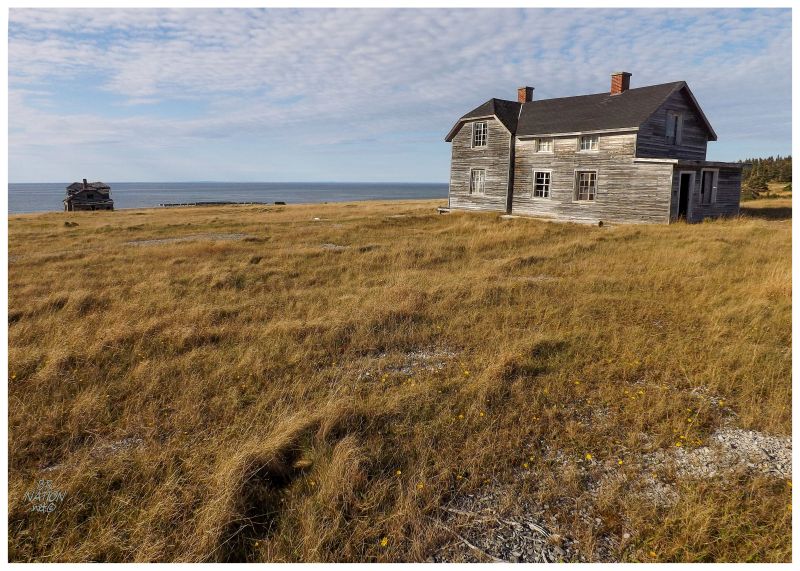
Only 14km (9mi) up the road from Port-Menier, lies what was at one time the paramount settlement of Anticosti Island. Donald's MacKay's Anticosti: The Untamed Island states that a William Wright from Newfoundland settled here at English Bay with his wife Alice in 1865. He was soon joined by Belliveaus and a Lejeune family from the Gaspé Peninsula. In 1872, the Forsyth Corporation incorporated in order to buy Anticosti Island and set up operations on the Atlantic isle. They had plans for a model town at Port-Menier, but with it not even surveyed yet, they set up their operations here at English Bay. By 1873, Montreal naturalist William Couper stated that in the last year English Bay had grown from seven buildings to fifty-five. |
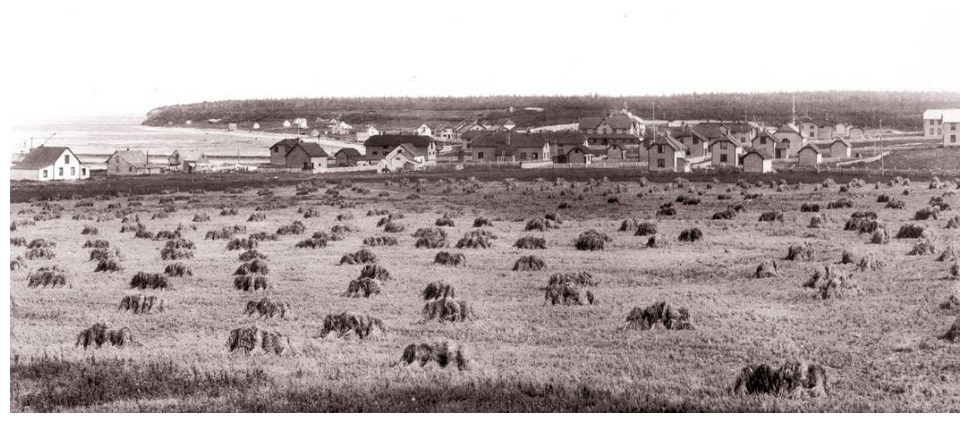
"Baie Ste Claire [English Bay], 1901, la moisson [the harvest]". Lucien Comettant. Courtesy www.comettant.com
Couper reported back about the residents of English Bay being "contented and comfortable". Things seemed to have changed by the 1890s though, after Anticosti had come under control of the Stockwells out of England. The Stockwell's ineffective focus on agriculture instead of fishing left English Bay poverty-stricken. The government offered to move the residents here to new homes in Hull Quebec and subsequently 13 families left English Bay one year & 7 families the next. As can happen with vacant homes left behind, there was a fire around this time that destroyed 12 of them in English Bay. Through it all, there were only 11 families left here. |
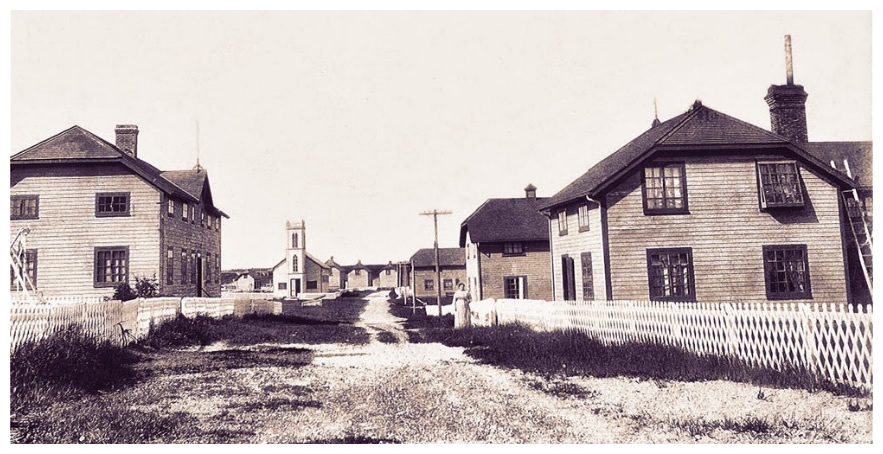
Baie Ste Claire [English Bay], early 1900s. Lucien Comettant. Courtesy www.comettant.com
After the Stockwells were unable to sell the island to the government of Canada, they eventually found a buyer in Henri Menier. Martin-Zede had led the initial visit to the island and reported back to Menier, where they disagreed on where the main administration buildings, post office, warehouse, school, etc., should be built on Anticosti. Martin-Zede wanted it built at Port-Menier with its good harbor, while Menier insisted on English Bay, even with its poor anchorage. Menier ordered the old stages and shacks of English Bay knocked down and replaced with a model town. In only a year, Menier arrived and his Quebec City building contractors had already knocked down the square of English Bay and replaced enough of the buildings for it to now be a "well-built little village." Menier came ashore and was greeted with a little girl presenting a bouquet of flowers. Soon after, he decreed that the town would now be known as Baie-Sainte-Claire, renaming the place in honour of his mother Claire. |
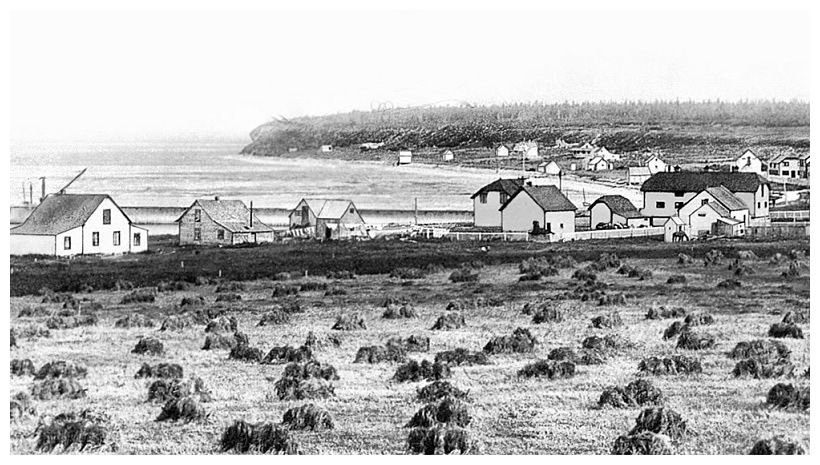
"Baie Ste Claire [English Bay], 1901, la moisson [the harvest]". Lucien Comettant. Courtesy www.comettant.com
The French ownership of Anticosti Island came under criticism and at the centre of it all was Baie Sainte-Claire (English Bay). Newspapers reported that the French were depositing war materials here in casemates surrounding the village, in order to get the French riled up and informed for the coming recapture of Canada by France. It would come to a point where the Governor General of Canada had to visit Baie Sainte-Claire to put an end to this. Coming ashore, Lord Minto was led to the food stores behind the village, where war pamphlets weren't found, but only turnips, potatoes, beets & cabbages - effectively putting an end to the Trump-like hysteria that France was coming back for Canada. |
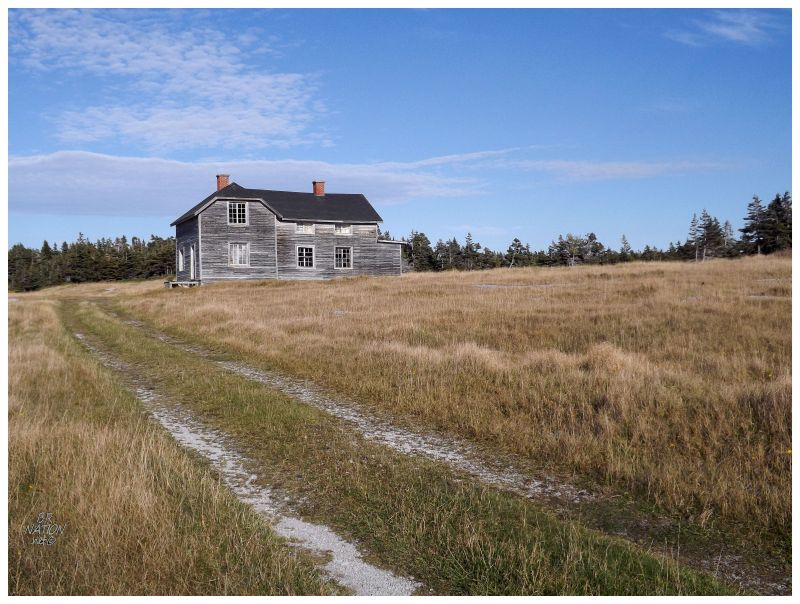
Now that all of that nonsense was behind Menier, he brought in a man from the French Congo by the name of Jean Picard to help with the farm at Baie Sainte-Claire. The fruit trees they installed would die in the face of the wind and precipitation here, but they focused on the specific growing season and managed to produce wheat, oats, barley, peas, white clover & hay from a season of only early June to late September. Even with these farming results coming out of Baie Sainte-Claire, Martin-Zede would eventually convince Menier that Port-Menier was the superior harbour. Observing things from his chocolate baron mansion, families slowly passed by and moved from Baie Sainte-Claire over to Port-Menier. This started in the early 1900s and by 1930 there were only two occupied homes left at Baie Saint-Claire alongside 60 abandoned homes in various stages of decay. |
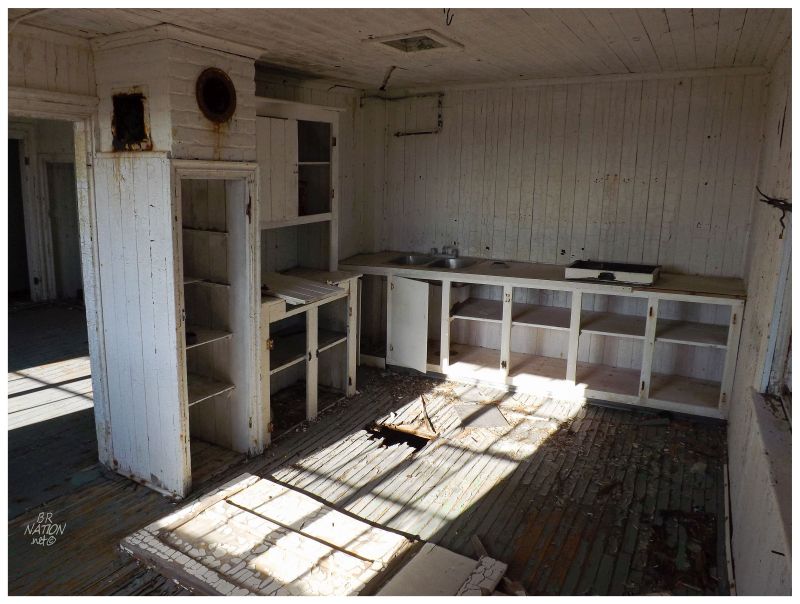
Only two homes from Baie Sainte-Claire remain today and one naturally wonders if these were the last two occupied homes. Edmund James Gallagher came to Anticosti Island in the early 1920s and describes his visits to Baie Sainte-Claire in his Anticosti Island QC, Canada. During this time there was one man with "a beard like Father Time" by the name of James Duguay who kept a small shop for the Quebec North Shore fisherman who would dry their cod here. He was also the postmaster of Baie Sainte-Claire, but with only a few families amongst a dying village, Gallagher points out that the postmaster mostly collected mail for himself. |

In addition to this Duguay character, there was also James or 'Jam'. Jam was a veteran of World War I, who was dying from his addictions through chain smoking and the drink. Jam was known to Gallagher because he regularly had bootlegged booze for sale, which Jam would get from a passing schooner running cheap stuff out of St Pierre et Miquelon. Jam would store this booze in various places in the vacant houses that surrounded him here at Baie Sainte-Claire. Jam was a widower and slowly dying of consumption, therefore he wasn't the best caretaker for his children. Gallagher describes coming out here for a 26er of Johnny Walker Black where he waited in a smoky room while Jam went to one of his vacant house hiding spots, leaving behind two of his daughters, one holding a weak baby that struggled with sickness. The baby died a few days later and Gallagher hoped to never see a similar scene again. |
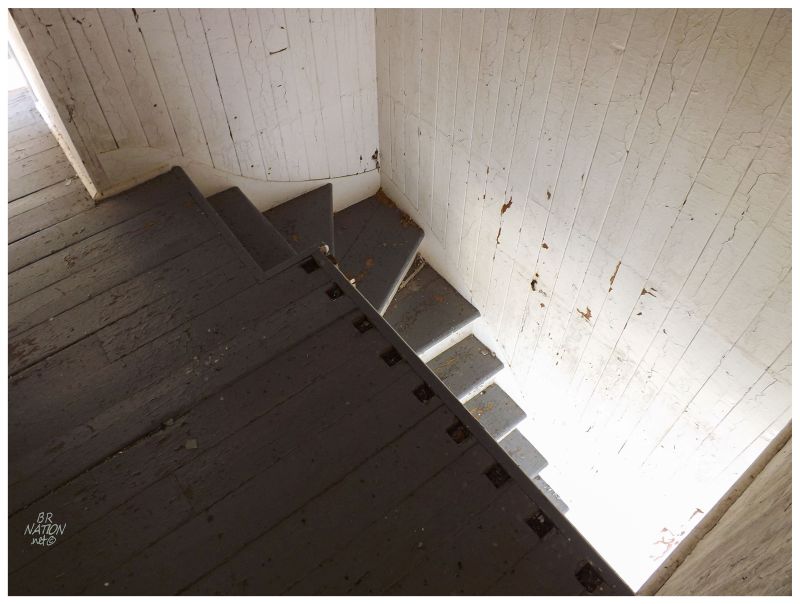
I wondered if these houses were indeed Jam's & Duguay's; and if they were, who lasted longer. The first house I went into could easily be slept inside and was still worthy of fixing up. Things had been scavenged and the floors were starting to weaken near the open doorways, but the craftsmanship and quality of this old house still shined through. I needed somewhere to pitch my tent tonight and the new frontrunner was the grasses next to this house. |

I continued up the shoreline road, finding a crumbling shed, cod drying rack and stone foundations where additional buildings used to stand. Looking at the old skyline shot of Baie Sainte-Claire, it looks like the more significant buildings like the administration building and the church would have been over here, with the houses closer to Port-Menier along the road. (If you look closely at the middle left of the above picture, you can see some of the deer who were curious about my curiosity towards their ruins.) |
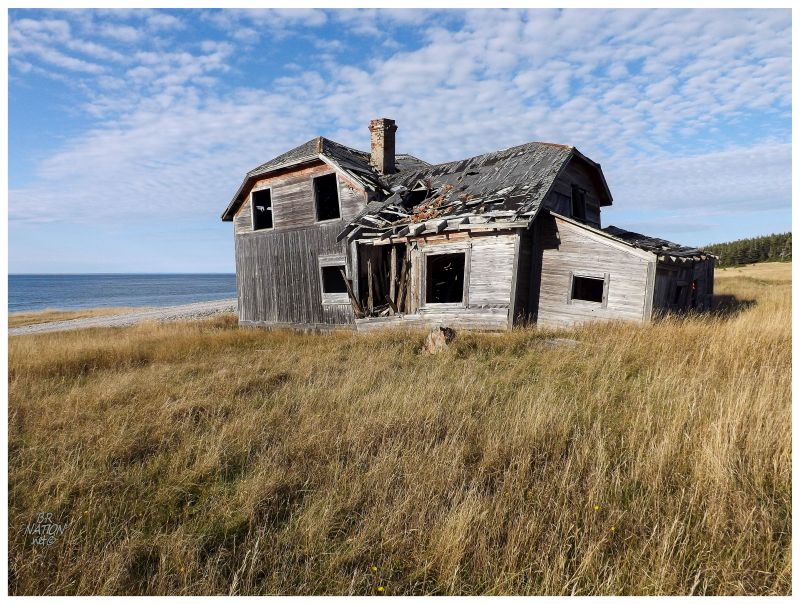
I briefly went over to the more ruinous house when I first stopped, but I wasn't in any hurry this afternoon, so I stopped yet again on the way back. My exploration of the first house was interrupted by a foursome of French 40-somethings approaching to explore the house themselves, but now that I was alone again, I stopped to take a closer look at this house too. |
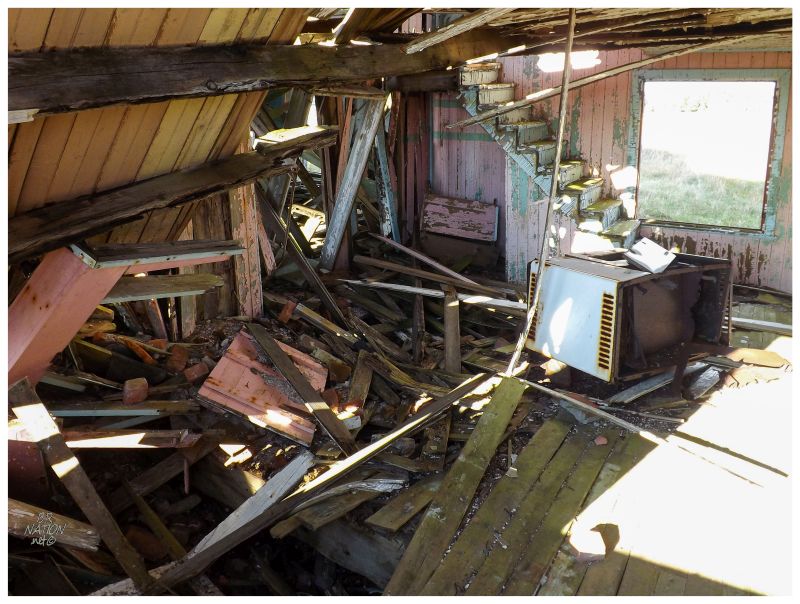
I peeked my head into an open window and noted that the house was probably nice in its time, but much of it had now collapsed into the basement. Duguay was here with his middle-aged daughter, which may explain the pink paint (if this is indeed Duguay's house). |

As much as I'm willing to go inside pretty much any building, I would have had to climb into a window here & it didn't look like you could move very far once inside. A kayak blog I found mentioned that this house was "literally swarming with bees", so I savoured the moss, soft colours and mostly, the lack of swarming bees. Anyway, I would be back here in a few hours to camp, so I skipped the graveyard for now & headed to West Point. 3km (2mi) up the road was the last stop on Anticosti Island. |